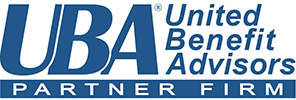 With the ever increasing amount of regulations in the Health Insurance industry – the amount of acronyms is rising rapidly. If you don’t follow the latest news religiously, then you could find yourself M.O. (missing out!). Even if you are a seasoned “insurance chooser” – some of the more common terminology could be just as confusing. Do you know your H.M.O.’s from your H.S.A.’s? And is H.S.A. the same as H.R.A.? What do the letters P.O.S. stand for? And have you filled in your E.O.I. form? Here is a rundown of some of the more common terms that you will more than certainly run into when renewing your next policy:
With the ever increasing amount of regulations in the Health Insurance industry – the amount of acronyms is rising rapidly. If you don’t follow the latest news religiously, then you could find yourself M.O. (missing out!). Even if you are a seasoned “insurance chooser” – some of the more common terminology could be just as confusing. Do you know your H.M.O.’s from your H.S.A.’s? And is H.S.A. the same as H.R.A.? What do the letters P.O.S. stand for? And have you filled in your E.O.I. form? Here is a rundown of some of the more common terms that you will more than certainly run into when renewing your next policy:
COINS – Coinsurance – In property insurance, requires the policyholder to carry insurance equal to a specified percentage of the value of property to receive full payment on a loss. For health insurance, it is a percentage of each claim above the deductible paid by the policyholder. For a 20% health insurance coinsurance clause, the policyholder pays for the deductible plus 20% of his covered losses. After paying 80% of losses up to a specified ceiling, the insurer starts paying 100% of losses.
COPAY – Copayment – A predetermined, flat fee an individual pays for health-care services, in addition to what insurance covers. For example, some HMOs require a $10 copayment for each office visit, regardless of the type or level of services provided during the visit. Copayments are not usually specified by percentages.
E.O.I. – The Evidence of Insurability (EOI) is an online health questionnaire that the insurance company uses to verify if a person meets the definition of good health. You will need to provide the physician names and contact information (address and phone number), medical issues, current medications, and treatment plans
H.M.O. – Health Maintenance Organization (HMO) – Prepaid group health insurance plan that entitles members to services of participating physicians, hospitals and clinics. Emphasis is on preventative medicine, and members must use contracted health-care providers.
H.R.A. – Health Reimbursement Arrangement – Owners of high-deductible health plans who are not qualified for a health savings account can use an HRA.
H.S.A. – Health Savings Account – Plan that allows you to contribute pre-tax money to be used for qualified medical expenses. HSAs, which are portable, must be linked to a high-deductible health insurance policy.
P.O.S. – Point-of-Service Plan – Health insurance policy that allows the employee to choose between in-network and out-of-network care each time medical treatment is needed.
P.P.O. – Preferred Provider Organization – Network of medical providers who charge on a fee-for-service basis, but are paid on a negotiated, discounted fee schedule.
Q.E. – Qualifying Event – An occurrence that triggers an insured’s protection.
T.L.I. – Term Life Insurance – Life insurance that provides protection for a specified period of time. Common policy periods are one year, five years, 10 years or until the insured reaches age 65 or 70. The policy doesn’t build up any of the nonforfeiture values associated with whole life policies.
W.O.P. – Waiver of Premium – A provision in some insurance contracts which enables an insurance company to waive the collection of premiums while keeping the policy in force if the policyholder becomes unable to work because of an accident or injury. The waiver of premium for disability remains in effect as long as the insured is disabled.
By Gem Nel

